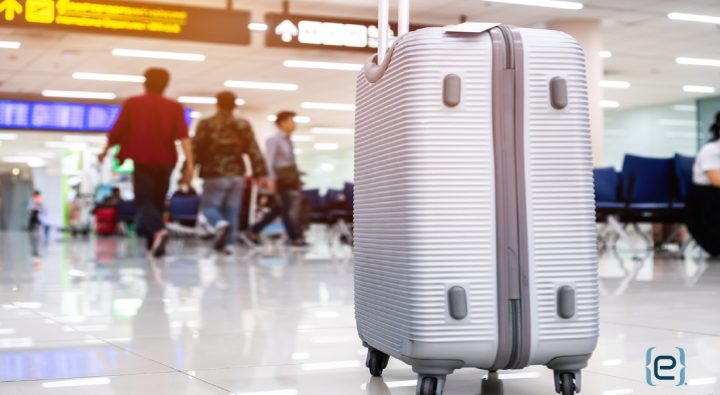used with permission from Tektonika (HP)
by Joe Hewitson
The snow gently falls outside as you kick back in your Snuggie, ready to conquer that Netflix backlog. You’ve earned it! During the months leading up to winter, you vanquished any and all network security vulnerabilities threatening your digital kingdom, and now, your office is more secure than the Fortress of Solitude.
But then, you look at your watch and realize the minutes are melting away, even though the outside world is freezing over. Days are getting shorter, and the seasons are changing. While you’ve admirably confronted office security head-on, cold weather heralds more travel, as employees seek to escape the freezing temperatures for warmer paradises. More travel means more devices outside your newly secured office.
Looks like your watch list will have to wait. You need to tackle travel security before winter has your users bringing back more than just off-season sunburns from their vacations.
Control the chaos in 3 steps
As the beaches of Cancun play host to thousands of weary travelers this season, smartphones, tablets, and laptops are sure to tag along. While these devices lay dormant in purses, suitcases, and hotel safes, there’s precious little you can control.
Time to kick those procrastination tendencies and take charge of your mobile fleet before it wanders outside your area of influence. In a lot of ways, it’s like preparing your kids for college: You only have so much time to make sure they’re ready for the dangers of life in this crazy world.
Fortunately, mobile devices are much more willing to heed your council. Here’s a quick checklist you’ll want to run through before your users flee the icy grasp of a lingering winter:
1. Lock up your data
 If your users have a smartphone, chances are they use it for at least some work. It’s also likely those devices contain some company data—be it email, texts, sales deck, etc. When you add in the fact most smartphones used in the workplace aren’t issued by the employer, the problem gets even stickier. How can you protect data when you don’t own the device?
If your users have a smartphone, chances are they use it for at least some work. It’s also likely those devices contain some company data—be it email, texts, sales deck, etc. When you add in the fact most smartphones used in the workplace aren’t issued by the employer, the problem gets even stickier. How can you protect data when you don’t own the device?
Firstly, you want to make it easier for users to leverage data remotely by empowering them with cloud tools, so they can be productive without the inherent risk of local data. When it comes to email and other communication, make sure you set up a digital policy that prevents messages from being stored on mobile devices and enforces appropriate security measures for access.
2. Stop the identity shuffle
Identity theft is an obvious concern for both network security and travel security. Your users probably use their smartphones for checking their bank accounts as much as their inboxes, so shoring up app security should be a priority. The good news is most apps containing identity information—like banking, social media, and mobile wallets—already store most data in the cloud. That said, if the phone is lost, stolen, or otherwise compromised, access to these apps is all the bad guys need to assume your identity.
Before your users—and their smartphones—head to the airport, guide them through the process of culling and securing potentially vulnerable apps. Show them how to enable dual authentication for their favorite payment apps. Reveal the glorious freedom that comes from deleting unused apps. And don’t forget about apps acting as gateways to more important apps or services. Password managers and authenticators likely aren’t necessary for the warm shores of Mexico and can be safely disabled until the return voyage.
3. Teach productive paranoia
The final key to preparing mobile devices for life outside your IT environment involves instilling a healthy level of suspicion. When your users travel, whether for work or pleasure, security is almost always sacrificed for convenience.
- Need to fire off a few emails before takeoff? Public airport Wi-Fi is the first stop.
- Looking for a bit of juice to top off your smartphone? Ooh, that public charging station looks handy.
- Need to use the restroom one last time and don’t want to lug all those bags with you? They’ll be fine for a minute, right?
 Common scenarios like these put mobile devices at risk. While avoiding these situations might seem common sense to you, your users may not give them a second thought. Take the time beforehand to show them what productive paranoia looks like and its positive effect on travel security. Then, equip them with power banks, demonstrate how to use a secure VPN, and make sure they’ve enabled remote wiping capabilities. Simple steps like these will keep their devices safe whether they’re heading for a new tan line or a trade show.
Common scenarios like these put mobile devices at risk. While avoiding these situations might seem common sense to you, your users may not give them a second thought. Take the time beforehand to show them what productive paranoia looks like and its positive effect on travel security. Then, equip them with power banks, demonstrate how to use a secure VPN, and make sure they’ve enabled remote wiping capabilities. Simple steps like these will keep their devices safe whether they’re heading for a new tan line or a trade show.
Ultimately, there’s only so much you can control when it comes to your user’s mobile devices, especially when those devices travel abroad. But the time to assert what you can control is now. Until smartphones can continuously monitor their own security, like some printers do, equipping your users with the knowledge and tools to do so ahead of time is your best bet.
To learn more, contact us today.







